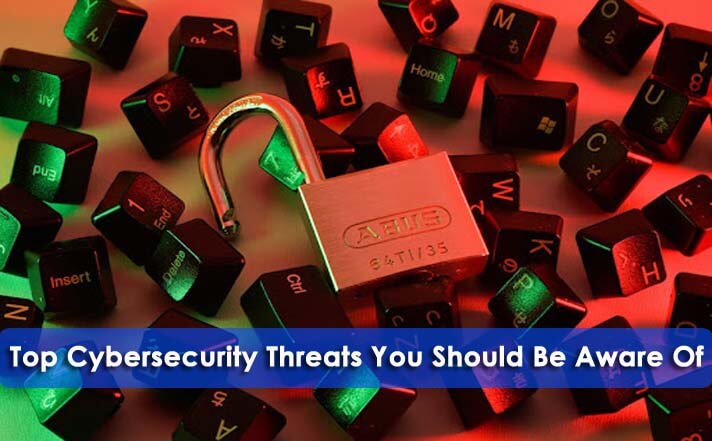With hackers and cybercriminals becoming more and more sophisticated, everyone must take the necessary steps to protect their digital assets. Every day, individuals and organizations face countless threats in cyberspace.
Whether you’re a tech-savvy individual taking extra steps for digital security or an executive concerned about company information breaches, it’s important to stay aware of the top current cybersecurity threats.
In this blog post, we will explore some of these potential risks so that you can understand how to best protect yourself from them.
Phishing emails and other malicious communications
Phishing emails and other malicious communications are becoming more and more common. These deceptive messages often come disguised as legitimate requests from trusted sources, such as banks or social media platforms, and they aim to extract sensitive information from unsuspecting victims.
Typically, the goal is to gain access to personal data, passwords, or financial information that can be used for fraudulent purposes.
Unfortunately, these types of scams can be incredibly convincing, often using scare tactics or promising enticing rewards to encourage users to respond. Despite the frequency of these attacks, there are ways to protect yourself.
Be wary of unexpected messages, never give out personal information unless you are certain of the source, and always be sure to report any suspicious communications to the appropriate authorities. By being vigilant and taking the necessary precautions, we can stay safe and avoid falling victim to these increasingly sophisticated scams.
Malware and ransomware attacks
The threat of malware and ransomware attacks is a very real concern. It seems like every few months there is a new story in the news about a company or organization that has had their systems compromised, leaving them vulnerable to hackers looking to exploit their data for their gain. This is why it is more important than ever to take steps to protect yourself and your data.
One such step is creating a long, complex password that is difficult for anyone else to guess. Of course, this can be easier said than done, especially when we have so many different accounts and passwords to keep track of.
Luckily, there are technology solutions available that can help you create and manage strong passwords so that you can stay safe online. By understanding how these cyber threats work and taking the necessary steps to protect yourself, you can avoid becoming the victim of a cyber-attack.
Unsecured Wi-Fi networks
Wi-Fi networks have become a ubiquitous part of our daily lives. From cafes to airports, we are constantly connected to the internet through Wi-Fi. However, not all Wi-Fi networks are secured, leaving us vulnerable to cyber-attacks and information theft.
Unsecured Wi-Fi networks, also known as open networks, allow anyone to connect without a password or any form of authentication, making it easier for hackers to eavesdrop on our online activities and steal sensitive information such as usernames, passwords, credit card numbers, and more.
Connecting to an unsecured Wi-Fi network is like leaving your front door unlocked, and it’s only a matter of time before an intruder gets in. It’s essential to be cautious when using public Wi-Fi and to choose secure networks that require a password or authentication. As we rely more and more on the internet, it’s crucial to protect ourselves from cyber threats and stay safe online.
Weak passwords and account security
We tend to opt for passwords that are easy to remember, such as “123456” or “password,” but these are also the easiest for hackers to crack. Unfortunately, many people still use these types of passwords for critical accounts such as social media, banking, or healthcare platforms. The result?
A potential invasion of our privacy, identity theft, or financial loss. To safeguard ourselves, we must take conscious measures to strengthen our passwords and protect our accounts.
This may include creating longer passwords, using a unique combination of upper and lower-case letters, numbers, and special characters, and enabling two-factor authentication. Remember, a secure password is your first line of defense against cyber-attacks. Take control of your account security, and protect your digital identity today.
Social engineering tactics
Social engineering tactics are an insidious way hackers can gain access to people’s personal information, finances, and systems. They encompass many tricks employed by cybercriminals to deceive their victims into granting them access.
One common method is phishing, where the attacker sends an email appearing to be from a trusted source, urging the recipient to click on a link or provide personal information. Tailgating is another tactic where the hacker follows a person into a secure area, hoping to gain access without authorization.
Pretexting is when the attacker impersonates someone else to elicit information from the victim, and baiting is when the attacker strategically leaves a device, such as a USB stick, for someone to find and use.
All of these techniques rely on manipulating the victim into doing what the attacker wants, which is why education and awareness are essential in preventing social engineering attacks. It is important to stay vigilant, skeptical and question any unsolicited communication – even if it appears to come from a legitimate source.
Unpatched software vulnerabilities
We rely heavily on software to store and process our data nowadays. However, what many people don’t know is that alongside these software programs come a set of vulnerabilities that hackers can exploit. These unpatched software vulnerabilities can lead to stolen data, system crashes, and even the complete takeover of a device.
While software developers work hard to release security patches to fix these vulnerabilities, it’s up to the user to implement them. Neglecting to do so can put you and your sensitive information at risk.
So, the next time your device prompts you to update your software, remember that it’s not just about getting the latest features – it’s about keeping your data safe from cyber threats.
Staying safe online is an ongoing and ever-evolving process. We must stay vigilant by implementing the necessary measures to protect ourselves from cyber threats such as phishing scams, malware attacks, unsecured Wi-Fi networks, weak passwords, and unpatched software vulnerabilities.
By doing so, we can ensure our data remains secure and avoid becoming a victim of a cyber-attack. So, take the steps today to keep your digital identity safe and secure.
You can further reach us through our social sites like Facebook and Twitter

Sophia Louis is a professional blogger and SEO expert from last 11 years. Loves to write blogs & articles related to Android & iOS Phones. She is the founder of Android-iOS-data-recovery and always looks forward to solve issues related to Android & iOS devices

